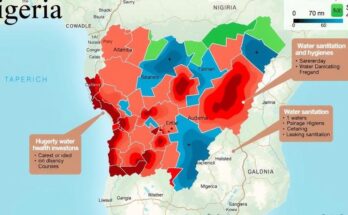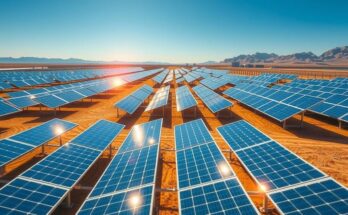New research has found that the recent earthquake in Iran was not caused by a nuclear test as previously feared. The 4.5 magnitude tremor was confirmed to be a result of natural seismic activity, debunking misinformation spread on social media shortly after the event. The weoconomic implications highlight the importance of accurate scientific communication during geopolitical tensions.
Recent research has discredited claims that a significant earthquake in Iran was actually the result of a covert nuclear test. This 4.5 magnitude quake, which occurred on October 5, 2024, provoked widespread speculation on social media and in certain media outlets, especially amid rising tensions in the region. The study published in the journal Seismica also underscored the risks associated with the misrepresentation of scientific data during geopolitical crises.
Led by Dr. Benjamin Fernando from Johns Hopkins University, the research utilized seismic data to establish that the earthquake resulted from natural geological activity rather than human interference. Dr. Fernando remarked on the spread of misinformation surrounding the seismic event, stating, “There was a concerted misinformation and disinformation campaign around this event that promoted the idea this was a nuclear test.”
The earthquake’s epicenter was situated approximately 30 miles from Semnan, a city historically prone to seismic activity. Analysis revealed that the quake was linked to tectonic processes occurring within the region due to the collision between the Arabian and Eurasian tectonic plates. The study definitively ruled out any association with nuclear detonations, as such tests have distinctly different seismic signatures.
The Comprehensive Test Ban Treaty Organisation (CTBTO) confirmed that previous seismic events in the area occurred in 2015 and 2018, both unrelated to nuclear tests. Despite this clarity, the notion that the quake was a nuclear test spread within minutes, fueled by various interpretations of seismic data that were incorrect. Dr. Fernando noted the role of social media in diffusing this misinformation rapidly, igniting conspiracy theories that conflated the event with unrelated seismic activity.
Moreover, some of the most influential misinformation originated from accounts linked to known disinformation campaigns, particularly from Russian sources. The study indicated that inaccurate reports proliferated among international news outlets, especially within Indian media. Reciprocal referencing of these erroneous claims exacerbated the situation, illustrating the need for a more robust system of checking scientific interpretations in times of crisis.
To counter such misinformation effectively, the research team advocates for enhanced collaboration among seismologists and other scientific agencies. Dr. Saman Karimi, also from Johns Hopkins, suggested that swift release of detailed scientific reports could mitigate misleading narratives. Such efforts necessitate partnerships between social media platforms and credible scientific sources to properly disseminate verified information.
The claims of a nuclear test triggered by an earthquake in Iran are rooted in geopolitical tensions characteristic of the Middle East. The implications of misinformation can escalate conflicts or diplomatic fraught; thus, establishing the true geological origin of seismic events is crucial. The research sheds light on the responsibilities of scientific communities and media in accurately conveying information during sensitive times. As social media serves as a primary source of news, the urgency for accurate science communication becomes even more pressing.
This investigation illustrates the need for vigilance against the rapid spread of misinformation, particularly in seismic events that can easily intertwine with geopolitical narratives. The study confirms that the recent earthquake in Iran was a purely natural occurrence, while emphasizing the responsibility of both scientists and media to prevent the distortion of scientific data. Ensuring accurate public information is crucial to maintaining social stability and international relations.
Original Source: www.albianews.com




